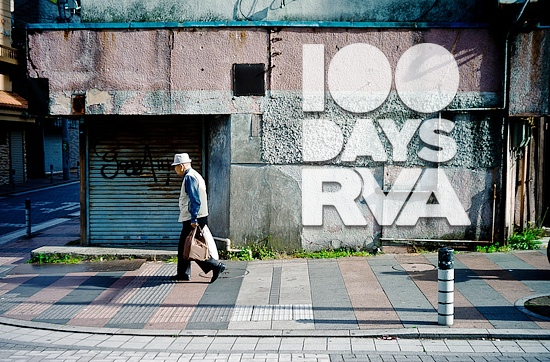Day #054: RVA retirement
Two groups are fueling urban renewal: young urban professionals and empty nested baby-boomers.

Inspired by Michael Bierut’s 100 Day Project, 100 Days to a Better RVA strives to introduce and investigate unique ideas to improving the city of Richmond. View the entire project here and the intro here.
- Idea: Continue building walkable neighborhoods for students and young professionals, but start developing truly walkable neighborhoods for recent empty nesters and retirees.
- Difficulty: 4 — Neighborhood building is tougher than simply constructing luxury condos. This will take the combined efforts of the city, contractors, and residents.
In many places across the country there is an undeniable push toward urbanism. Walkability is desirable, and for decades, millions of Americans have faced a dearth of walkable opportunities outside of a few big cities.
Millennials, who appear to be abandoning the “suburban 2.5 kids with a white picket fence” formula at a higher rate than generations past, have been the focus of walkable urbanism, particularly in Richmond. Meanwhile, an entire class of people who stand to benefit even more have been neglected: baby boomers and recent retirees.
For many, walkable urbanism is a highly desirable lifestyle that has been out of reach because of safety concerns or schools. Recent empty nesters, unshackled by the educational necessities of their children, see the appeal of trying new restaurants every night without battling stop lights and sprawl in the suburbs.
For older people, it’s a matter of maintaining independence. As driving ability diminishes, the elderly will find themselves more and more dependent on others for transportation. Walkability is an alternative to stuffy retirement communities and assisted care.
Suburban Nation: The Rise of Sprawl and the Decline of the American Dream sums it up: “Most elderly are neither infirm nor senile; they are healthy and able citizens who simply can no longer operate two tons of heavy machinery.”
Naturally Occurring Retirement Communities like Winter Park, Florida or the Upper East Side in New York represent a model for every city trying to develop a tax base while providing options to citizens. More importantly, independence cuts costs. With Medicare spent on nursing care expected to reach 30% of the program by 2030 and the future of Social Security in doubt, creating environments where older residents need as little assistance as possible will benefit the country–and those residents.
In Richmond, several higher end apartment and condo buildings have opened.1 They offer impressive river views and luxurious amenities, but most of them fall short of one important goal. These buildings are being placed in areas that are not mixed-use and their pedestrian friendliness, outside of a restaurant or two, is limited. They aren’t easily accessible, require car trips for basic amenities, and they don’t foster the types of communities that are attractive to individual’s without the burden of a 9 to 5.
The city population is growing thanks to young professionals and students, but gains have been slower for the other childless age group. The 25-35 year old age range increased from 25.9% of the population to 30.4% between 2000 and 2010 while the 65 plus population shrank from 13.2% to 11.1%.
There is untapped demand in the metro-Richmond area for walkable neighborhoods aimed at people other than students and young professionals, and that demand is going to explode as the demographics of this country change.
The city needs to embrace and encourage this type of development–the type of development that goes beyond a 15-story suburb on top of a parking garage in Shockoe Bottom. Neighborhood building is the future. It is the competitive advantage Richmond has over Henrico and Chesterfield, and it is a key future component of Richmond that needs to be fostered by the government, now.
Love this idea? Think it’s terrible? Have one that’s ten times better? Head over to the 100 Days to a Better RVA Facebook page and join in the conversation.
Photo by: Sushicam
- The Fan seems like the obvious answer, but it isn’t as walkable as it seems, and many of the residencies are high maintenance and lack easy accessibility. ↩
-
Recommend this
on Facebook -

Report an error
-

Subscribe to our
Weekly Digest





There are no reader comments. Add yours.